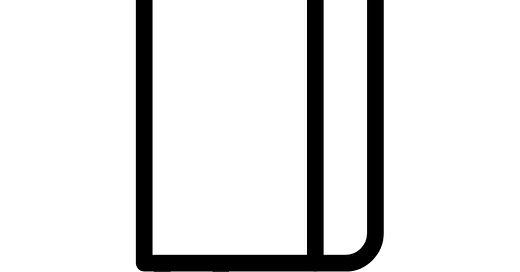The Alleged Crypto Asset Securities
The SEC claims 9 digital assets are securities - here’s why:
On July 21, 2022, the Securities and Exchange Commission (SEC) filed a complaint against a Coinbase employee, his brother, and his friend for insider trading of crypto asset securities. In doing so, the SEC has accused nine digital asset issuers of violating securities laws, yet none of these issuers are listed as defendants in the complaint.
The Alleged Crypto Asset Securities
In pursuing the insider trading charges, the SEC has also alleged that the following nine different digital assets are in fact securities: AMP, RLY, DDX, XYO, RGT, LCX, POWR, DFX, KROM. The SEC turns to the Howey test to support its accusations, alleging these digital assets were investment contracts; they were offered and sold to investors who made an investment of money in a common enterprise, with a reasonable expectation of profits to be derived from the efforts of others, resembling crypto asset securities.
1. AMP
Amp is the native token on the Flexa Network–a digital merchant payment network, allowing merchants to accept crypto assets from consumers by converting the asset to merchant’s preferred fiat currency or crypto asset. Amp staked in pools by investors is used as collateral for transactions conducted on the Flexa Network. Flexacoin, Amp’s predecessor, was sold to investors through an ICO, raising $14 million in 2019, at the time the network was not operational. Flexa regularly promoted the sale of Amp on secondary exchanges.
Because the Flex team owns twenty-percent of the total supply of Amp–sharing a common interest with its investors–and the Flex team continually emphasized its own importance in the success of the network and profit expectations to its investors, it fails the Howey Test according to the SEC.
2. RLY
The Rally Network is a platform for creators and their communities to build their own digital economies. In addition to being a utility token to interact with features on the network, RLY is a governance token of the Rally Network. The more RLY an investor owns the more voting power the investor holds in decisions involving the development and the business of the network.
The sale of RLY to fund the development of the network, the creation of a community treasury to fund the Rally team to incentivize its efforts in making the network more valuable, and Rally’s assertions that the centralized team of developers would provide profits for its investors allegedly lends itself to qualifying as a crypto asset security.
3. DDX
DDX is the governance token of the non-operational DerivaDEX protocol, under development by DEX Labs, Inc. DerivaDex is a community governed derivatives exchange. The SEC supports DDX’s categorization of a crypto asset security because DEX Labs raised funds through public sales to promote the development of the nonoperational protocol, the management team holds the vast majority of emitted tokens–creating a common interest with its investors, the promoting of incentivization for early investors through a staking program, and the listing of DDX on secondary exchanges.
4. XYO
XY Labs, Inc. has created a crypto-location and data blockchain network of devices that collect and validate geographical data. XYO tokens are used to facilitate data location inquiries, network participants who respond to these inquiries are paid in XYO.
The SEC’s categorization of XYO being a crypto asset security is bolstered by XY Labs’ ICO to fundraise the network, the funds were used for marketing strategies and to develop the network. Furthermore, XY has repeatedly assured its investors of the team's promotional efforts through secondary exchange listings and the centralized development group’s commitment to providing a valuable network.
5. RGT
Rari Capital is a decentralized lending and borrowing platform. RGT is used for fee discounts and provides investors governance rights in Rari Capital. At the time the protocol was not operational, Rari Capital raised funds that were used to develop the protocol and products through private sales to investors. Also, Rari and its founders continued to promote the potential profitability of RGT to its investors through media and Rari’s efforts to list RGT on secondary exchanges.
6. LCX
Liechtenstein Cryptoassets Exchange (LCX) provides crypto related services including a crypto asset exchange and a trade terminal. The LCX token is used to pay for services on the platform. LCX held a coin offering, while the platform was partly operational, to raise funds to continue the platform's development, pitched to investors the potential growth of LCX, and LCX owns ten percent of the token supply–sharing a common interest with investors that rely on the LCX team to produce profits, potentially through burning mechanisms.
7. POWR
Powerledger is a decentralized protocol with the mission of providing peer to peer energy trading. POWR, the native token of the protocol, is required to participate in the various services provided by Powerledger.
Through media posts the Power team has promoted that investors and the Power team are in a common effort to grow the business and the profitability of the network, and public sales are used to fund the growth of Powerledger. Power has also emphasized the team’s role in growing the platforms and investors can profit off POWR fee revenues and trading POWR on secondary markets. The SEC claims these actions subject the platform to securities laws.
8. DFX
DFX Finance operates a decentralized exchange pool for crypto based assets. Users are incentivized to provide liquidity to pools that facilitate the network by being rewarded DFX tokens. DFX’s founding team holds fifteen percent of all DFX tokens, sharing a common interest of growing the platform with its investors, and continually promotes that the management team’s efforts is the catalyst for providing returns to its investors.
9. KROM
Kromatika DEX, operated by two developers, provides efficient trading opportunities to users by placing range orders on trading platforms. Users pay for these trading services in KROM through service fees. Kromatika, while the DEX wasn’t fully operational, conducted sales of KROM to raise capital that was used to fund the team and the exchanges development. Kromatika holds roughly 20 million KROM–aligning developers’ and investors’ interest; Kromatika has also emphasized, through social media, the potential gain for investors, driven by management’s business and technical efforts.
Closing Thoughts
Ultimately, the SEC has seen fit to use this complaint filed against three individuals to not only claim the defendants have broken the law but also the nine uncharged digital asset issuers listed, who are alleged to be selling unregistered securities. Furthermore, there are a few takeaways that the web3 community should understand involving the SEC’s categorization of crypto security assets. First, the SEC has made it emphatically clear throughout this complaint that digital assets sold through ICOs for the purpose of fundraising lends itself to being subject to securities laws, especially when the protocol has not yet become operational, most likely because the asset can only be held for investment purposes at that stage. Second, developers should be cautious of promoting their platforms to investors as an opportunity for profit and prioritizing listing assets on secondary exchanges. Third, the level of a protocol's decentralization is important, especially in regards to who is guiding the development of the protocol. A protocol’s development that is guided exclusively by its founders may prove exemplary of board control which may be subject to securities laws. If a protocol, especially in its early development stage, desires to avoid the forceful hand of the SEC, it may be advantageous for the protocol to focus on decentralization of leadership, avoiding early stage fundraising through ICOs, and avoid promoting profitability to potential investors. While more clarity is needed from the SEC, this complaint may provide a glimpse of what is to come for the web3 community and regulation.



